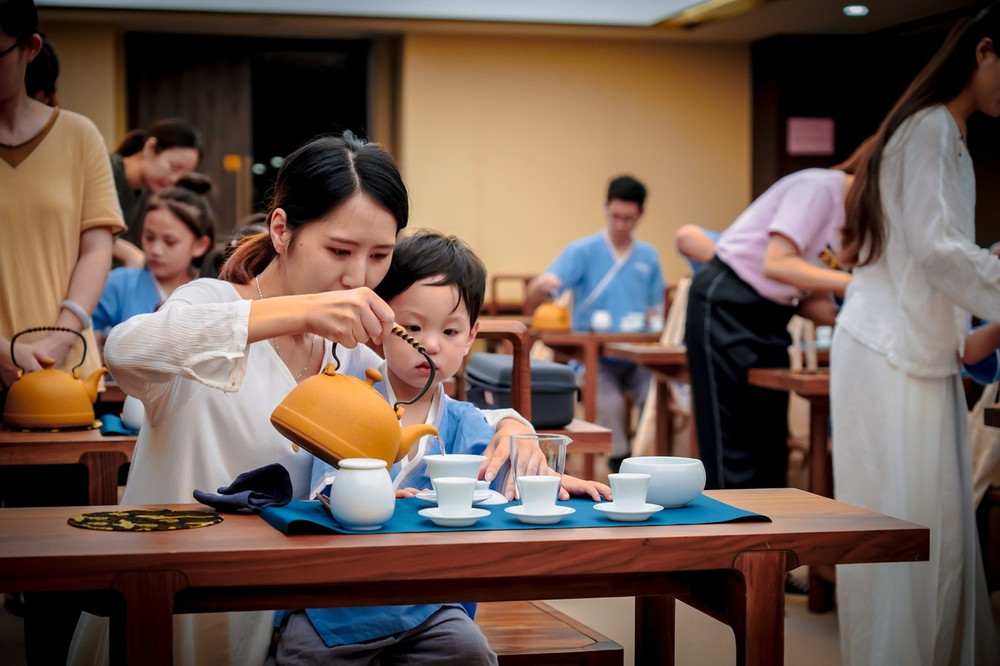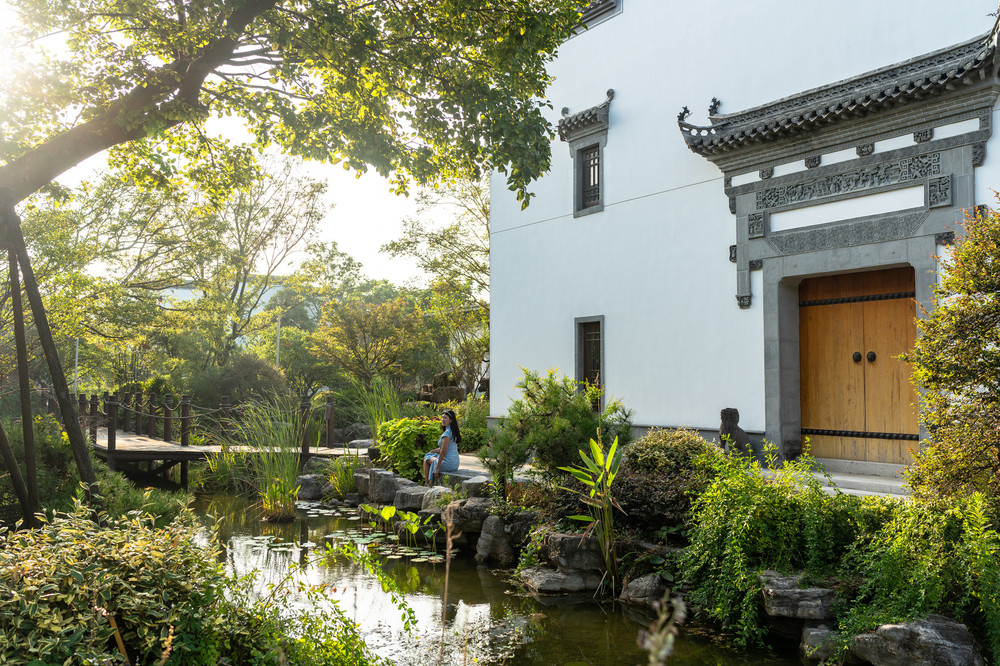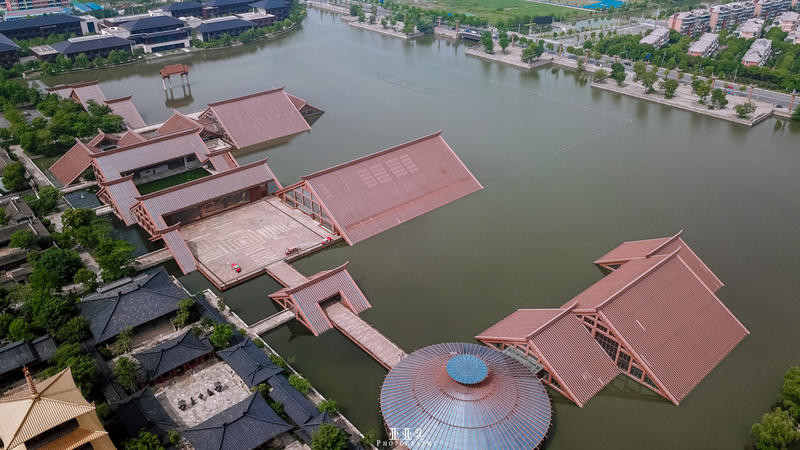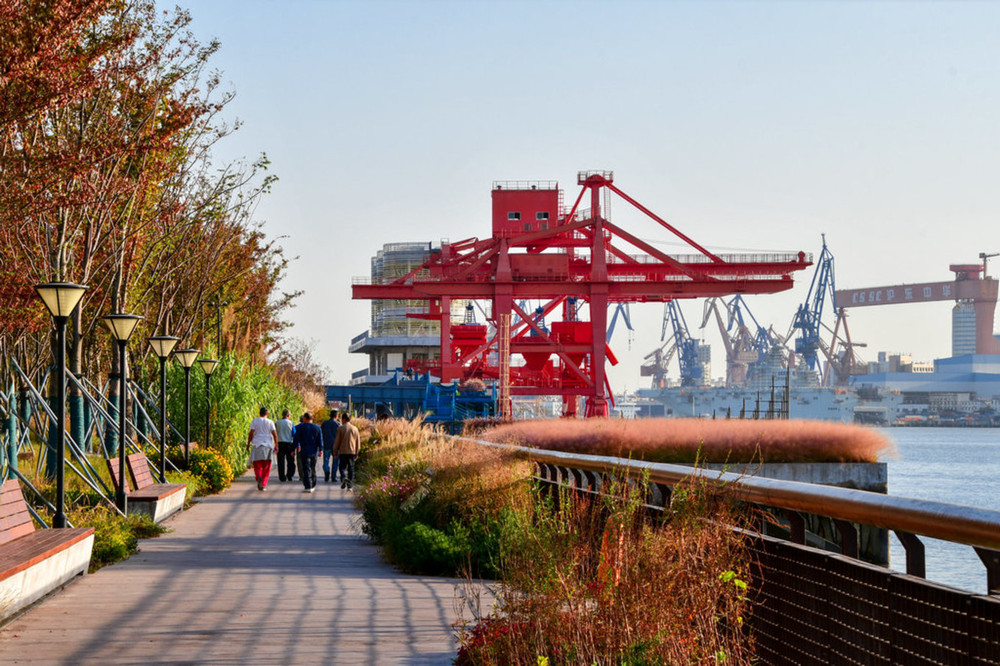The author embarked on a journey through Shanghai, visiting a series of iconic locations. The itinerary began at People’s Square and proceeded to The Bund, where the author descended to the Puxi entrance of the Bund Sightseeing Tunnel. This tunnel, situated between the Oriental Pearl Tower in Pudong New District and East Nanjing Road in Huangpu District, marks China’s first cross-river pedestrian tunnel. It offers a dynamic landscape with a blend of light and shadow art, traversing eight distinct scenic areas in a 5-minute journey that costs 50 yuan per person.

Exiting the Pudong Sightseeing Tunnel, the author walked to the Oriental Pearl Tower, where tickets can be booked online for 160 yuan per person (excluding the top-level space capsule). The experience was marred by a long, hot queue without air conditioning, taking nearly 2 hours before accessing the elevator. The elevator’s commentator had a slow, deep voice, reminiscent of a party broadcaster in film and television works. The observation deck, located on the second sphere at 263 meters, offers a view that, to be frank, is not significantly different from ground level—it’s more of a psychological experience. The deck is divided into upper, middle, and lower levels: the top level is a rotating restaurant, the middle is the regular observation deck, and the bottom level is a suspended observation corridor that can be quite distressing for those with acrophobia. The third sphere, the space capsule at 350 meters, requires an additional 80 yuan on top of the 180 yuan base fee.
On the ground floor, the Shanghai Urban Development History Exhibition Hall offers a fascinating look at the city’s development over the past century through cultural relics, documents, archives, and pictures, all presented with advanced audio-visual equipment. Unfortunately, time constraints meant a rushed visit.
Leaving the area, the author took bus 81/Cai Lu Special Line/993 from Lujiazui Ring Road Fenghe Station, getting off at Dongchang Road Ferry Station after two stops. A 2-yuan ferry ride across the river led to the Dongjin Line. At Jinling East Road Ferry, the author turned left to find 481 Zhongshan East Second Road Shiliupu Wharf, where a 50-minute cruise could be booked online for 98 yuan per person. The 8 PM departure was caught just in time, with the first level offering a cabin with seats and the second level providing a standing area for photography, though it was a bit chilly, and an additional 50 yuan was required for seat fees.
The journey concluded with a return to the starting point and disembarking. The author’s visit included People’s Square, The Bund, The Bund Sightseeing Tunnel, Shanghai Oriental Pearl Radio & TV Tower, Lujiazui, Dongchang Road Ferry Terminal, Jinling East Road Ferry Terminal, Nanpu Bridge, South Shaanxi Road, Zhongshan Park, Imperial Garden, Chongming Island, Chongming Xuegong (Chongming Confucian Temple), and Yingzhou Park. The experience was documented and posted on July 26, 2021.The ticket price of the Pudong sightseeing tunnel is 50 yuan per person. After coming up from the entrance and exit, walk to the Oriental Pearl Tower. The online reservation ticket for the Oriental Pearl Tower is 160 yuan per person (the top space capsule is not booked). From the moment of entering the gate, there is a queue. It is hot and tiring, and there is not even air conditioning. After nearly 2 hours, we are allowed to enter the elevator. The voice of the elevator commentator feels the same as the announcer of the Communist Party in film and television works, slow and deep. No wonder. Speaking every day from morning to night, it is definitely impossible to be as cadenced and full of vigor as North Korean television announcers. Honestly speaking, the surrounding ground scenery seen from the sightseeing layer is no different from that seen on the ground. It is purely a psychological feeling at work. The sightseeing corridor is on the second sphere (seemingly at 263 meters). The second sphere is divided into upper, middle, and lower three layers. The upper layer is a revolving restaurant (enter with a ticket). The middle layer is an ordinary sightseeing layer, and the elevator directly reaches this layer. There is a telescope (1 yuan for 30 seconds. Stretching one’s neck and looking intently, it is all black. It is also broken). The lower layer is the suspended sightseeing corridor. Just stepping on this layer, I was not mentally prepared and was startled. The suspended glass floor is really nerve-wracking for me who has acrophobia. There is cold air blowing. It really feels like being in mid-air. The front where one steps is transparent. I dare not look forward. Many tourists sit or stand on the transparent glass. This is purely for seeking excitement. The third sphere (space capsule at 350 meters) costs an additional 80 yuan on the basis of 180 yuan. The Shanghai Urban History Development Exhibition Hall on the first floor (ground floor) is a historical museum specially introducing the development history of Shanghai in the past 100 years. Through precious cultural relics, documents, archives, and pictures, and with advanced video and audio equipment, it vividly reflects the history of the development of modern Shanghai. It is very interesting and worth a visit. Unfortunately, due to time constraints, we passed by in a hurry. Exit through Gate 8, walk to Lujiazui Huanyu Road, Fenghe Road Station. Take Bus No. 81/Cailu Special Line/993. After two stops, get off at Dongchang Road Ferry Terminal Station. Turn left and walk towards the riverside. Take the ferry for 2 yuan per person. It takes only 5 minutes to reach the other side – Dongjin Line. Jinling East Road Ferry, No. 127 Zhongshan East First Road. Turn left to find No. 481 Zhongshan East Second Road, the Shiliupu Wharf. (A 50-minute cruise can be booked online for 98 yuan per person), rushing to catch the 8 PM departure. The first deck is the cabin with seating, but the lighting for photography is not ideal. The second deck has half an area where you can freely stand and take photos (the downside is that it feels a bit chilly), and the other half requires an additional 50 yuan for a seat fee. The journey ends with a return to the original point and disembarking. After exiting the wharf, turn left and walk 500 meters to take bus number 55 to Nanpu Bridge Station—Line 4. On February 9th, at the Shaanxi South Road Station on Line 1, exit 3, I went to the Quanjude restaurant on Huaihai Middle Road to eat roast duck, which was not cost-effective, the price was too high. It’s just famous. On March 12th, I went to Zhongshan Park (exit 4, turn left and walk straight) to see the cherry blossoms. Enter through gate 1, turn right, and near the Imperial Garden Hotel, there is a small cherry blossom grove with very few trees, and I came at the wrong time. On April 7th, I visited Chongming Island. Chongming Island, located at the mouth of the Yangtze River, is the third-largest island in China, known as the ‘Gateway to the Yangtze River, the Fairyland of the East China Sea’, and is the largest estuarine alluvial island and the largest sand island in China. Chongming Island has been formed for more than 1300 years and is a famous land of fish and rice. In the first year of the Tang Shenlong era (705 AD), Chongming Town was first established in the Xisha area, named Chongming (‘Chong’ means highIt takes 1 hour to reach Chongming Chenjia Town Station (Yangtze River Bridge). Chongming Island is flat, with densely populated villages, crisscrossing roads. Compared to downtown Shanghai, it feels a bit desolate. After getting off, turn left into the island’s tourist traffic waiting room. Take the Nan Yu Special Line / Bao Chen Special Line. After 15 minutes, get off at Zhongxing Town. Transfer to the Bao Qi Line. After 15 minutes, get off at Bei Qi Xiao (the last stop). Ask the driver how to get to Liu Jia Village Cherry Blossom Theme Park. But the driver replied: the blooming season has passed, almost all have withered. There are only a few small saplings planted privately there, not much. The ticket is 40 yuan. Hearing this, my heart was chilled: the false propaganda on the internet is too misleading. Can’t believe it. Decisively turned around and took the bus back to Zhongxing Town. Transferred to the Nan Yu Special Line. After 1 hour, got off at Dongmen (招呼站). Turned around and arrived at Hanshan Temple.
The site is quite small, with the office area being much larger than the main hall. I encountered a peculiar staff member sitting inside the main hall. As I took a photo of the Buddha statue, she told me not to, saying that if your phone gets lost, the Buddha would be lost outside too. I thought to myself: I am not a Buddhist pilgrim. The loss or damage of the Buddha is none of my concern. And it’s bad luck to curse me for losing my phone so early in the morning. The Chongming Hanshan Temple is located at 21 Dongmen Road. In the fourth year of the Tianqi era during the Ming Dynasty, Lady Zhu, the wife of General Yang, arrived at Chongming from Suzhou in a small boat. Lady Zhu shaved her hair on the island and became a nun under the Dharma name Dianxiu, establishing a temple named Hanshan Temple, which houses the statues of Hanshan and Shide. Apart from the temple name and the deities enshrined, Chongming Hanshan Temple and Suzhou Hanshan Temple are said to have competing poetic descriptions of their bell sounds: ‘Yingzhou Dongmen Hanshan Temple, midnight bell welcomes guest boats’ and ‘Outside Gusu City Hanshan Temple, midnight bell reaches guest boats’.
The origin of the name ‘Chongming Island’ comes from a legend. At the end of the Eastern Jin Dynasty, after Sun En’s peasant uprising failed, several rows of bamboo rafts from the rebel army floated to the Yangtze River estuary near the East Sea, where they ran aground in the silt at the river’s edge. These rafts blocked the silt brought by the Yangtze River, gradually forming a sandbar. This sandbar, not yet fully exposed above the water, appeared and disappeared with the ebb and flow of the river and tides, giving off a mysterious aura. People said it was both monstrous and divine, both ‘sneaky’ and ‘obvious’, so they named it ‘Sui Ming’. Later, as more and more silt accumulated on this sandbar, it became higher and larger, fully exposed above the water, forming a small island that was no longer affected by the tides. People, seeing its majestic presence, no longer regarded it as strange and developed a sense of reverence. Thus, they changed the name from ‘Sui Ming’ to ‘Chong Ming’. Chongming Island also has a beautiful ancient name: ‘East Sea Yingzhou’. It is said that in ancient times in the East Sea there was a side realm of Yingzhou, inhabited by immortals. But this fairy island did not settle down and remained elusive. Both Qin Shi Huang and Emperor Wu of Han sent people to search for it in the East Sea but failed to find it. Later, in the Ming Dynasty, Emperor Zhu Yuanzhang bestowed the name ‘East Sea Yingzhou’ upon Chongming Island. Since then, Chongming Island has been known by the ancient name of Yingzhou.
Continuing to walk south, I felt that Chengqiao Town (Chongming County) is far from comparable to the urban area of Shanghai, lacking any impression of prosperity. Not far to the left, I arrived at Chongming Xuegong (also known as Chongming Museum/Confucius Temple. Open from 8:30 to 16:00, closed on Mondays. Address: 696 Aoshan Road). Chongming Xuegong is one of the only three remaining Xuegongs in Shanghai today. The current site, also known as Chongming Museum, features a layered and stacked complex of ancient buildings. The two stone archways are simple and steady, inscribed with ‘Virtue matches heaven and earth, the way surpasses ancient and modern times’. AtThe Western Corridor is home to the Huang Pimo Art Museum, which features three exhibitions: ‘The Formation and Development of Chongming Island’, ‘Museum Collection’, and ‘Natural History’. These exhibitions provide a systematic introduction to the long history and cultural heritage of Chongming. Behind the Dacheng Hall, two buildings house the Chongming Folk Custom Exhibition Hall.
To the south of the road lies the north gate of Yingzhou Park, where the scenery is rather dull. However, walking further in, one reaches the south gate scenic dike on the river’s southern bank, a sightseeing promenade. From the river dike, one can view the distant south bank and the ebb and flow of the Yangtze River, a view that pales in comparison to the Bund. Due to the rainy weather, the river scenery is blurry. A large stone stands by the river, inscribed with ‘Chongming Island’.
After strolling for a while, one heads west along the dike, passing the Nanmen Bus Station, with Nanmen Port next door. A ferry departs at 12 PM for Baoyang Road Wharf (the last one at 5:30 PM, and the last one to Shidongkou Wharf at 6 PM), costing 16 yuan for a 50-minute journey. Tourists enter the ferry cabin in an orderly manner, with no need to scramble. Inside the cabin, seats are assigned, and there are no standing positions. Watching the boat rise and fall in the river can be a bit dizzying.
After disembarking, one takes the No. 160 bus to Tongji Road Baoyang Road Station and enters the No. 3 line Baoyang Road Exit 1.
Chongming cuisine is diverse, offering Yangtze River delicacies, Chongming hairy crabs, fermented fish, grass head pancakes, Chongming cake, Chongming old white wine, soybean pickles, Chongming golden melon silk, Chongming white goat, Chongming white lentils, Chongming Sha Wutou pig, Chongming crispy taro, Shrimp and large black ginseng, Shanghai reed, and clams wrapped in dough.
The British Thames River town’s charm and residential characteristics pursue the best harmony between humans and nature, reflecting the strong modern, international, ecological, and tourism cultural atmosphere of Songjiang New City. The natural and smooth road system is organically combined with the beautiful river channels, serving as the backbone for the development of the entire area. A continuous multi-functional pedestrian street and a lakeside English square form the main axis of the overall plan and also become a good place for residents and tourists to gather, perform, relax, and interact, rich in levels, fascinating, and full of life and fun.









